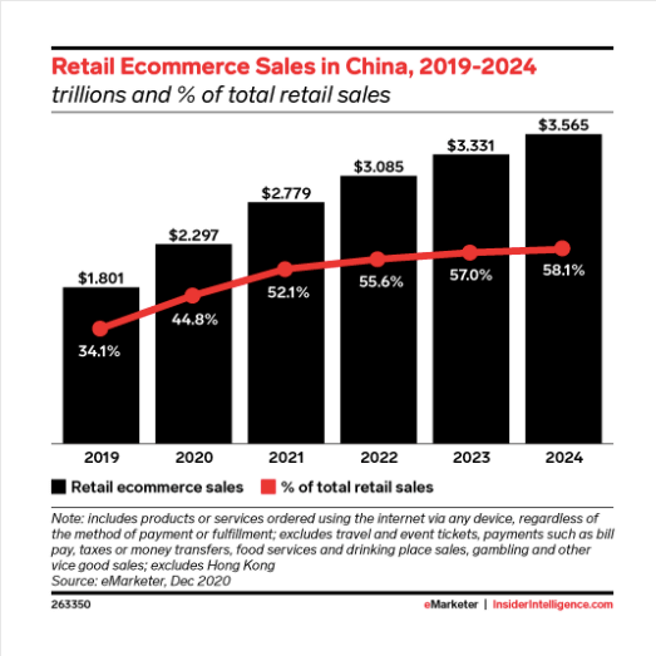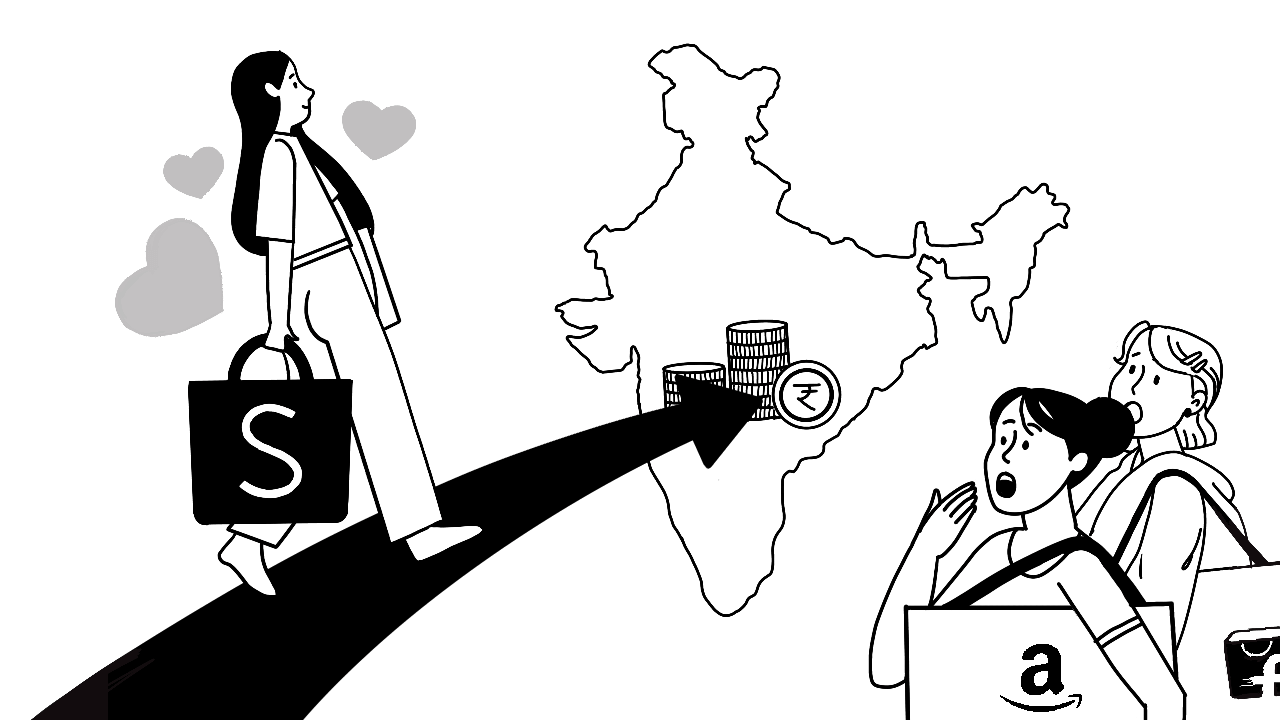India is the second-most populous country in the world. And yet, the total number of users transacting online in 2021 was just over 348 million, according to a recent Inc42 report. It’s no secret, then, that India’s digital economy has massive potential. At present, Amazon India and Walmart’s Flipkart are the two e-commerce giants that dominate this online economy.
Headquartered in Singapore, Shopee is Southeast Asia’s top e-commerce platform. As of November 2021, it has officially entered India. How will Shopee find its place in such a heavily monopolized e-commerce market? And how will its presence impact existing players like Meesho, Ajio, Amazon, and upcoming contenders like JioMart and Tata Digital Enterprises? In this article, we’ll answer such questions and give you a complete picture by addressing all sides of the story.
Understanding Shopee’s history
Shopee was launched in 2015 in Singapore by its parent company, Sea Limited. Despite not having the first-mover advantage, it came out on top amid the cut-throat competition provided by eBay’s Qoo10, Amazon, and Alibaba’s Lazada. Its success in Southeast Asia can be attributed to its competitive pricing structure, promotional offers, and distinct marketing strategies. The company introduced Shopee coins, which could be won by submitting product reviews and playing in-app games, and redeemed against future orders for extra discounts. This is a great example of Shopee’s unique discount strategy which is both engaging and effective.
Over the years, Shopee has become a household name in Southeast Asia. When it ventured into Brazil in 2019, it succeeded in transforming and commanding the e-commerce market there as well. People in these countries often associate Shopee with its silly, eccentric advertisements that are controversial, but at the same time, memorable. Below is an example of one such commercial with the international icon Jackie Chan. You might be tempted to write it off as senseless advertising, but don’t discount the catchy jingle, which will no doubt be stuck in your head as you read the rest of this article.
Entering India: A calculated move
According to the 2021 report by Inc42, India promises a $200 billion opportunity by 2026 in e-commerce.

Emarketer indicates that the country’s retail
transactions amounted to less than 7% in 2021,
which is in stark contrast with China’s
52.1%.

Shopee recognized this gap in India’s digital economy, seeing it as an opportunity to play an important role in developing this underutilized potential. Before opening its Indian offices in November 2021, the company started dipping its toes in the e-commerce market with a recruitment campaign in August last year. The campaign, linked below, promises free shipping and zero commission fees for buyers as well as sellers. It helped in building the momentum for Shopee’s official launch a few months later.
Making waves
With Amazon’s endless resources and vast network, Indian consumers wouldn’t need a new e-commerce platform to fulfill their needs, right? The stats beg to differ. According to an article by Outlook India, over 1 million people installed the Shopee app on the Google Play Store in the very first month of its launch. Furthermore, it reported over 100,000 orders in a day. If we compare this with the daily average of 2-2.5 million orders on Flipkart and Amazon, it really puts things into perspective and shows us that even these e-commerce giants have a lot to lose. Business Standard reports that January 2022 saw Shopee crossing 21 million app downloads and 20,000 registered sellers.
So, what is working in Shopee’s favor? Order volumes are the focal point of their business plan in India. They are not concerned with the value of the order or its average selling price. With products priced as low as INR 1 to INR 199, Shopee is aiming to get a foot in the door before introducing its big-ticket items. By the time these will be rolled out, Indian consumers would already be comfortable using this platform. Depending on the quality of their experience, they wouldn’t be as hesitant to choose Shopee even as their average order value increases.
The bumpy road ahead
Though things seem to be going well for Shopee, it does have a daunting list of challenges stretched out in front of it. India, after all, is known for its bumpy roads. The first challenge will be posed by the existing e-commerce players in the market, who have already established a trusted base. Having a much deeper understanding of the market conditions as well as the Indian culture, players like Amazon, Flipkart, JioMart etc. are likely to be better equipped in tackling issues such as the general aversion to digital payments. As Shopee expands its operations in the country, it might also meet challenges in terms of infrastructure, mobile and internet network issues, logistics, transportation, and more.
On top of that, The Confederation of All India Traders (CAIT) has accused Shopee of having a negative impact on the Indian marketplace. “Such predatory pricing is being done with a calculated view to eliminate the traditional and small-scale businesses in the country. Thus, Shopee is conducting its business in India in violation of provisions of the Competition Act, 2002,” Praveen Khandelwal, CAIT Chairman, was reported as saying in an Inc42 article. The CAIT is also raising questions about the company’s origin and moving for a ban, arguing that it has “Chinese routes.”
In conclusion
Will Shopee tackle these obstacles and pass with flying colours or be forced to make an abrupt exit by CAIT? Only time will tell. In the meantime, we’re certain that the company will continue to make waves with its aggressive marketing and bold business strategies.

